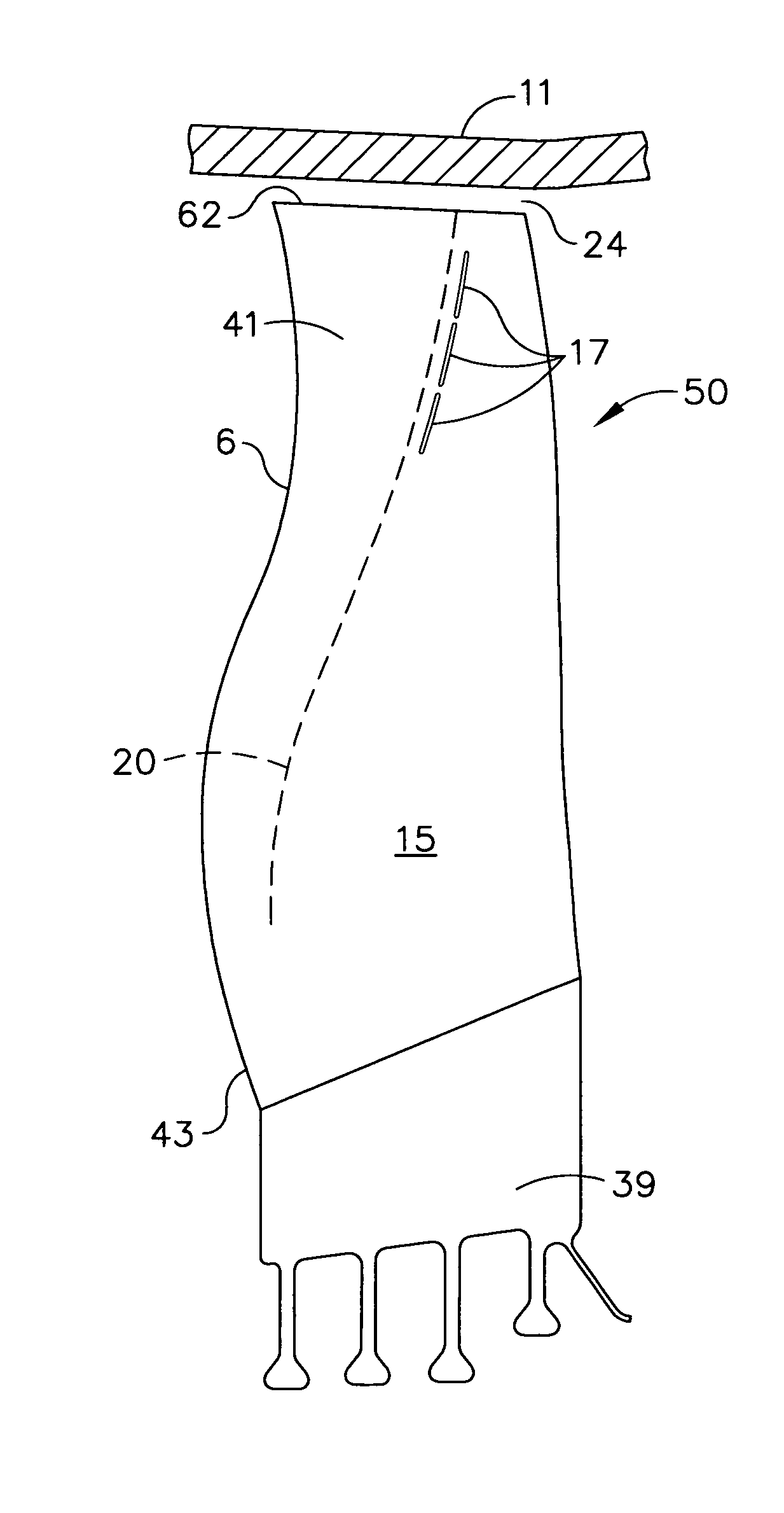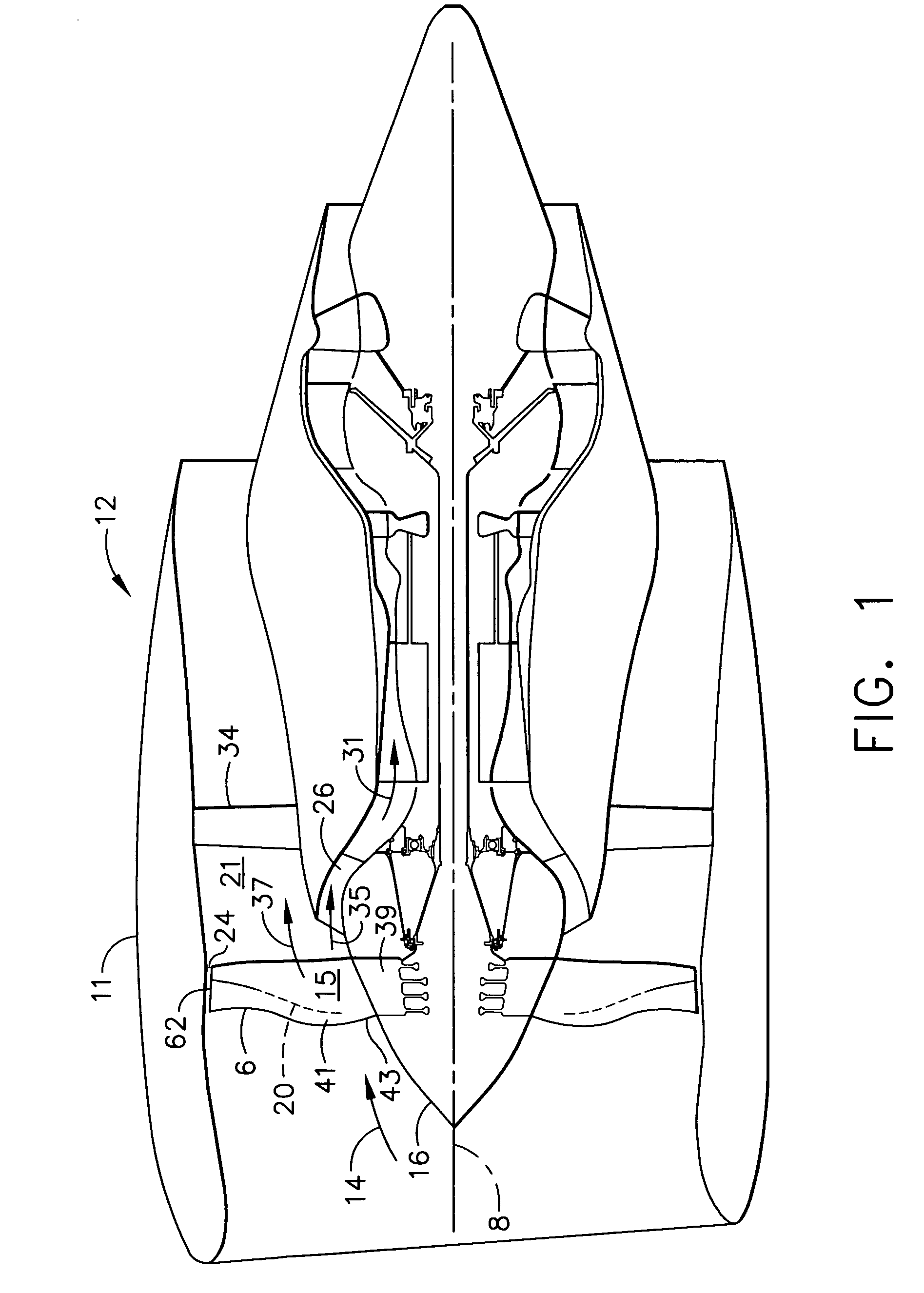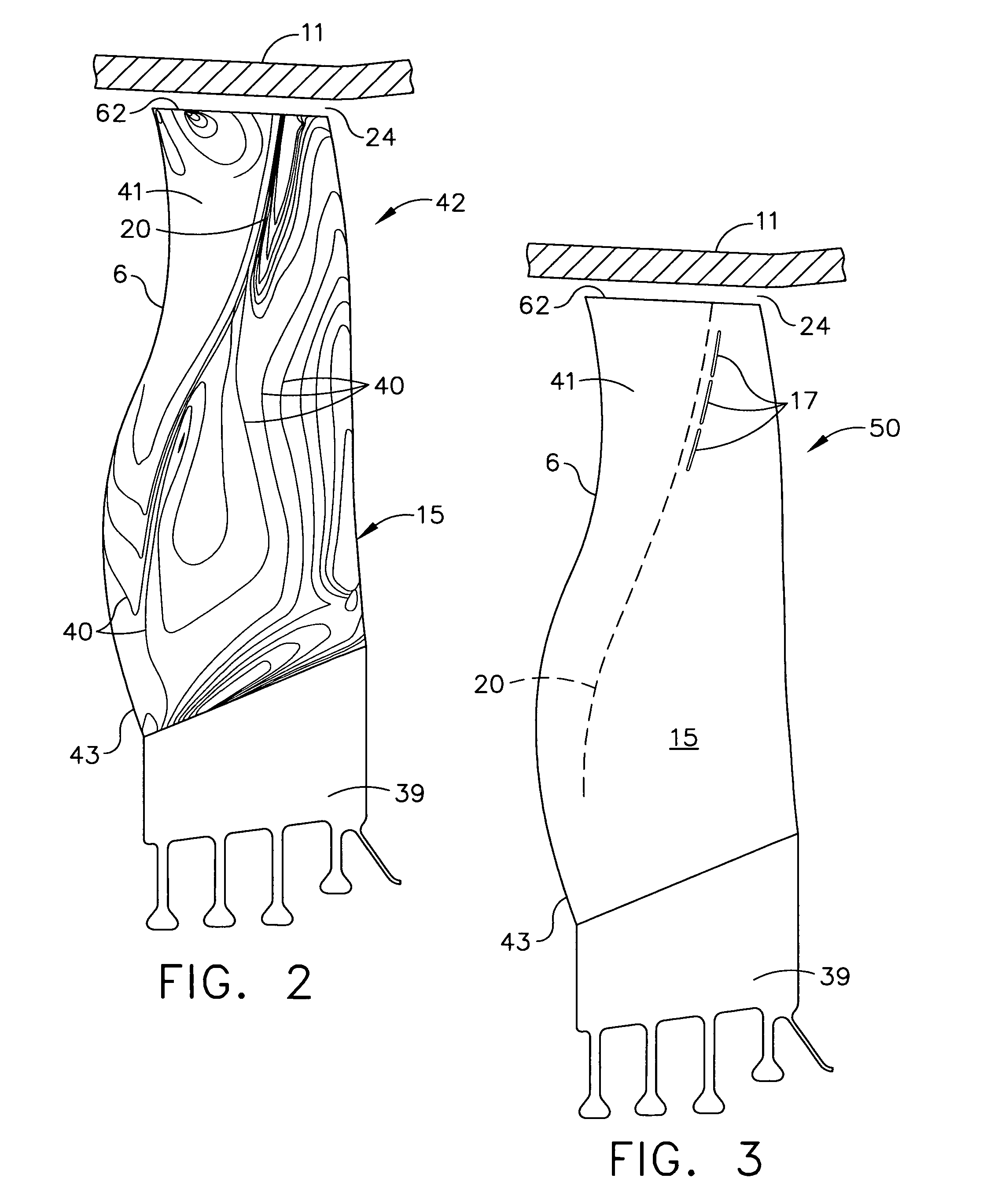Methods and apparatus for aerodynamically self-enhancing rotor blades
a technology of rotor blades and aerodynamics, applied in the direction of machines/engines, supersonic fluid pumps, liquid fuel engines, etc., can solve problems such as instabilities in aerodynamics, and achieve the effect of improving aerodynamic performan
- Summary
- Abstract
- Description
- Claims
- Application Information
AI Technical Summary
Benefits of technology
Problems solved by technology
Method used
Image
Examples
Embodiment Construction
[0027]As used herein, the term “blade” is used to refer to a type of airfoil suitable for use in conjunction with a rotor. However, the present invention is not limited to blades and is more generally applicable to all types of airfoils.
[0028]Various configurations of the present invention utilize available centrifugal energy of a rotor to remove, invigorate, and reingest blade and hub surface boundary layers to thereby improve performance, aerodynamic stability, and noise generation of a compression component. More specifically, a portion of the lossy blade and hub surface boundary layer is bled off, pumped up, and channeled through a hollowed out region of the blade. This boundary layer in some configurations is re-ingested into the main flow for the added purpose of redirecting and mixing with tip clearance flow and / or blowing the trailing edge wake. Configurations of the present invention are particularly useful for swept blading, in which surface boundary layers are pooled as a...
PUM
 Login to View More
Login to View More Abstract
Description
Claims
Application Information
 Login to View More
Login to View More - R&D
- Intellectual Property
- Life Sciences
- Materials
- Tech Scout
- Unparalleled Data Quality
- Higher Quality Content
- 60% Fewer Hallucinations
Browse by: Latest US Patents, China's latest patents, Technical Efficacy Thesaurus, Application Domain, Technology Topic, Popular Technical Reports.
© 2025 PatSnap. All rights reserved.Legal|Privacy policy|Modern Slavery Act Transparency Statement|Sitemap|About US| Contact US: help@patsnap.com



